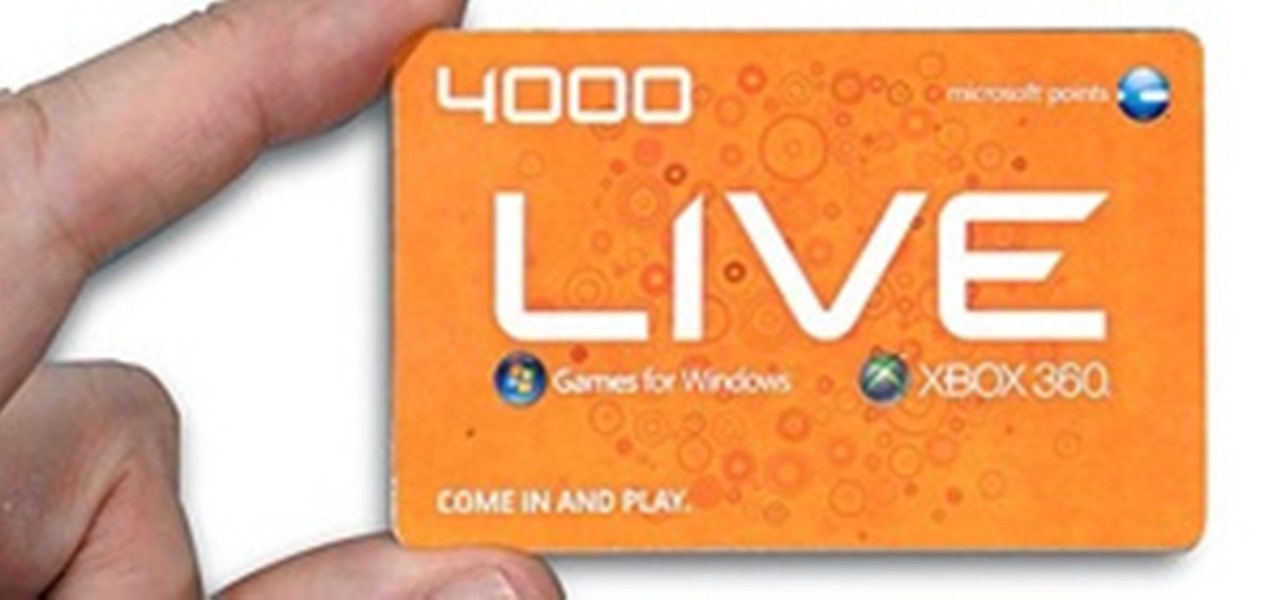
We're officially seeking Null Byters on a weekly basis who are willing to take the time to educate the community. Contributors will write tutorials, which will be featured on the Null Byte blog, as well as the front page of WonderHowTo (IF up to par, of course). There is no need to be intimidated if you fear you lack the writing skills. I will edit your drafts if necessary and get them looking top-notch! You can write tutorials of any skill level, about anything you feel like sharing that is ...

To make things a little more fun here on Scrabble World, I've decided to start a weekly feature for word freaks to ponder about it... a challenge. No, I'm not 'challenging' any of your words... I'm challenging your brains. See if you can figure some of these Scrabble puzzles out. You can print this page or hand write the questions out to play at home (or wherever).

noob - Short for "newbie." Someone with little to no experience or skill. In some gaming communities, there is fierce debate over the distinction between "noob" and "newb"—one being derogatory while the other simply indicates being a novice. While some may argue the semantic differences, "noob" is the most common spelling seen around the internet, for both purposes.

A microchip is a tiny computer chip which has an identification number programmed into it. The chip is the size of a grain of rice, and it is easily and safely implanted into the skin of an animal with a hypodermic needle. Once the animal is "chipped" he can be identified throughout his life by this unique number. Microchips are read by a scanning device which recognizes a unique identification number. Through registration of the animal with a national database, the owner can be contacted and...

Today, we are going to combine what we learned from the Introduction to Cryptography article with our Java programming skills. If you are new to Java, check out Matthew's Learn Java: Part One for a quick beginner's lesson, or check out some of the Java tutorials directly on Oracle.

As some of you Mad Science readers will remember, we recently covered the separation of water into hydrogen and oxygen using electrolysis. Passing a current through water can rend it apart, but we can also recombine that oxygen and hydrogen to make electricity! This is the principle behind those vehicles run by hydrogen fuel cell engines.

Balloons are fun, but the helium ones are always more entertaining. So today, we're going to learn how to make hydrogen gas by combining toilet bowl cleaner with aluminum foil. With hydrogen, you get the same lighter-than-air properties of helium, plus it will explode! Historically, this has proven disastrous, but for our tiny-scale experiments, it will be safe and fun!

As my in game name (TehGeekFather) would suggest I tend to like things on the Geekier side of things. Games being one of them. (duh I'm on a Forum dedicated to Minecraft) That being said I am a huge Fallout fan. (NO! not the band. <Sigh>) I'm referring to the post apocalyptic series first developed by Black Isle Studios, the roll playing game division of Interplay, back in 1997. Fallout 1 and 2 were pretty big back then open game play, being able to complete tasks in different ways depending ...

In this article, I'll be showing you how to make a simple yet effective static electricity generator. Basically, this device allows you to carry a constant static charge on your body and discharge it on anything grounded or of opposite polarity. The electricity generated is around 8-10 kV, at a very low current. The shock is enough to startle your friends, just like a static shock from a trampoline or carpeted room. You'll need a little experience in soldering and circuit design to build the ...

Let's face it, the world we live in is far from the fairy-tale land we want it to be, where violence doesn't exist and weapons are not needed. Our foremost goal in life out there in the scary world is simply to survive. And if we need a few tools to accomplish this, we should use them, right?

Sometimes, paying for the whole Xbox LIVE service might seem like a waste of money. You're constantly experiencing lag, you've got people modding and cheating, kids are being loud and obnoxious over the mic, and your kill-to-death ratio is getting dumped on. Basically, the whole multiplayer experience just isn't cutting it anymore—you want to go back to the classic world of single player. Well, there's always downloadable content—simply known as DLC.

Last week's social engineering phone calls were a blast. We made some friends, and even some enemies. We scored cheap food for some buddies, made some phone bills disappear, and even got a few people some free pizzas. So overall, it was a very successful night. In light of its success, I figured we'd all do another one!

It's no secret that water and electronics don't mix well, but somehow, people always manage to combine the two. I've had my fair share of water-damaged electronics, everything from cheap headphones to a desktop computer. My devices are getting dunked in water so much, it's like doughnuts in coffee. And I know I'm not the only one. That jam session with your favorite song will end really quick when your iTouch is chilling in the toilet bowl.

Originally made as portable convenience locks, padlocks are known for their cheap, simplistic and relatively secure design. Their construction is made up of a body, shackle and locking mechanism, with the shackle typically assuming a "U" shape to be easily linked to things like fences and chains.

This is the first official announcement for a new weekly activity on Null Byte for the community to participate in. Starting next week, depending on how much traffic we get doing it, we are going to start doing live social engineering calls via Skype. I've made a list below so that you can get a feel for some of things we'll try to accomplish in these calls.

Here's a delicious Byte of information for you. A proof of concept program on Linux was coded to exploit a known bug in how the Linux Kernel (versions 2.6.39+) handles permissions for the

Last Friday's mission was to accomplish solving HackThisSite, realistic 2. This second mission in a series of realistic simulation missions was designed to be exactly like situations you may encounter in the real world, requesting we help a friend take down a racist hate-group website.

Here's another delicious Byte. Ucha Gobejishvili, a Georgian Security Researcher under the handle of longrifle0x, discovered two cross site scripting (XSS) vulnerabilities on the official website of Forbes. He discovered the hole in two different locations on the site, and has already informed the website of the vulnerability.

Google is great. They provide us with tons of free services and open source APIs that we can code fun tools for, one of which I don't think gets enough credit: Google Voice.

Cell phone jammers, a DIY endeavor for the darker crowd. I'm pretty sure we've all considered having one at some point: whether the obnoxiously loud woman next to you is announcing private bedroom stories to a crowd on the subway, or your kids are grounded from using the phone (and consequently snagged a hidden prepaid phone), sometimes having a cell phone jammer comes in handy.

Last Friday's mission was to accomplish solving HackThisSite, realistic 1. This is the first in a series of realistic simulation missions designed to be exactly like situations you may encounter in the real world. This first mission, we are asked to help a friend manipulate the website voting system for a Battle of the Bands vote count in his favor.

There was a huge ban wave recently on Xbox Live. In the unfortunate event that you decided to do something against Microsoft policy, and have consequently gotten yourself banned from Xbox Live, you may have come to the realization that doing whatever got you banned from Xbox Live in the first place was not worth the risk.

This is it! That last basic mission. Last Friday's mission was to accomplish solving HackThisSite, basic mission 11. This final mission in the basic series was made to give us the skills and a place to apply our Apache server knowledge. This will teach us how to traverse through awkward and custom directory structures.

The already robust and ingenious Nmap tool has received a whole slew of new scanning scripts that can be used to do all sorts of naughty endeavors. Notably, the SQLi module, since it is a necessary evil that we must cover here at Null Byte. This major update is going to fuel today's lesson.

Keyloggers are a must-have tool in your arsenal. Hardware keyloggers have the advantage of being undetectable through anti-virus or other protection programs. They also capture keystrokes before the OS even boots up, so they are pretty handy tools.

Reverse shells are useful for issuing commands to a remote client when the client is behind something such as a NAT. You might say, "But can't a normal shell or simple SSH tunnel do the same thing?". No, it can't. All over the internet I see a lot of confusion regarding the difference between a normal shell and a reverse shell. Let's clear this up before we get started.

Just removed an important gem from your weapon? Totally screw yourself over by restarting a bloodline instead of the battle you just lost? It sure would be great if you could backup your character so you can always have a safe copy ready to go at a moment's notice. Well, those smart folks over at the Infinity Blade forums have devised a clever way to do this.

Last Friday's mission was to accomplish solving HackThisSite, basic mission 8. This meant that we had to learn some more basic Unix commands.

For newbies to astronomy, expensive equipment is an understandable deterrent. But with some thorough Google searching, you can find plenty of How-To's for making your own tools for less. Below are a few sites with several cool projects to offer.

I can't believe it, but I've actually read about dozens of people getting their iTouch, iPhone, or iPad stuck in a bricked recovery loop and then going out to buy a new one. This is overly unnecessary. When it gets stuck in the recovery loop, some people mistake themselves by thinking that it is impossible to get the device back into DFU (Device Firmware Upgrade) mode. Getting the device back into DFU mode would at least allow us to jailbreak the device, essentially bringing it back from its ...

Another great Community Byte in the bag! This week was really cool, especially with programming going on twice a week. We transitioned to the new times very smoothly with no one left behind, from what I can tell.

Cheers to another completed Community Byte project! Things went well regarding timeliness and being friendly to the other coders and students. If you've got ideas for our next mission, or an idea for a tutorial, submit them to me. Friday, our mission was to take out HackThisSite, basic mission 5. This mission focused on JavaScript, again. This time there is a little bit more security in place.

Last post, we looked at fractal cookies based off of the recipe by Evil Mad Scientist Laboratories. In this post, we'll follow their recipe for fractal cupcakes based off of the Koch Snowflake, which we used previously to decorate pumpkins for Halloween.

Welcome to another Community Byte announcement from Null Byte! The goal of the Community Bytes is to teach people in a co-operative, hands-on manner. Learning from experience and immersing yourself in a subject is the best way to learn something foreign to you, so that is exactly what we do! In our sessions, we have started to both code and complete HTS missions. This means that there is something for everyone here, so make sure you join us.

With the rather large success of the Community Byte activities, both programming and HackThisSite, I have decided to continue to do both activities every session! With that said, when programming sessions occur, they will be lead by Sol Gates in Gobby. Also, the programming mission will no longer be to code a tool, we have changed it to be even more "noob friendly". This means that instead of coding a tool, you will be walked through puzzles and challenges that must be solved by coding a scri...

Welcome to another Community Byte announcement! For the past few Community Bytes, we coded an IRC bot, and hacked it. Then, we created a web-based login bruteforcer! This week we are going to start something a bit different. We are going to start going through the missions at HackThisSite one-by-one each week, starting with the basic missions.

Our mission for this week's Community Byte was to create a Python program to crack web-based passwords, like the ones you would see on an email or router login. I wanted it to be universal in the sense that it could be easily modified and adapted to another website just by changing a few variables. That was a success! Even though people weren't on time to the coding session, everything went well.

JavaScript is the language of the internet. It is what allows us to create dynamic, interesting webpages that are fast, web-based applications and so much more. The primary use of JavaScript is to write functions that are embedded in or included from HTML pages and that interact with the Document Object Model (DOM) of the page. This is the magic that allows all of what we see to happen, and for our browser to be manipulated.

File recovery on Linux is a bit different than Windows. It requires different software than the Windows counterparts because every OS has their own file system. Windows uses NTFS, or FAT file systems, while on the other hand, Linux uses ext-based file systems. I personally use ext4 file system because it's the latest and greatest ext-journaling system and supports a large level of directory recursion and file sizes, but most installations still use ext2 or ext3. When files are deleted from a ...








































